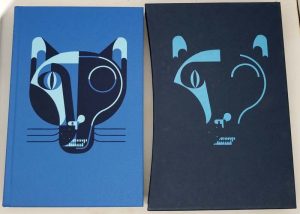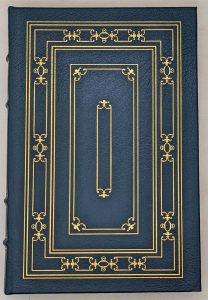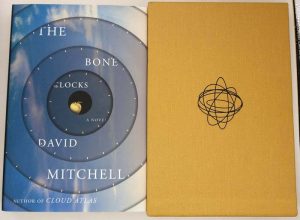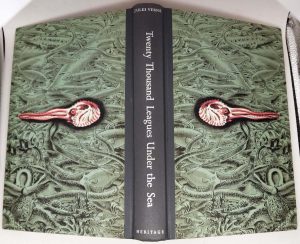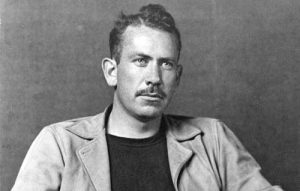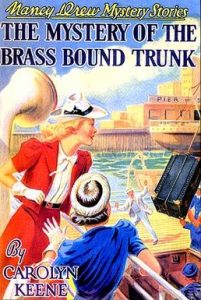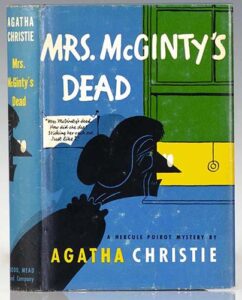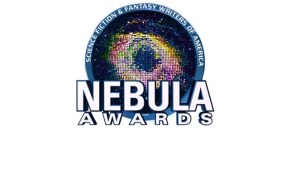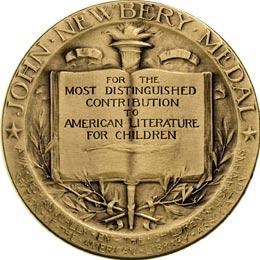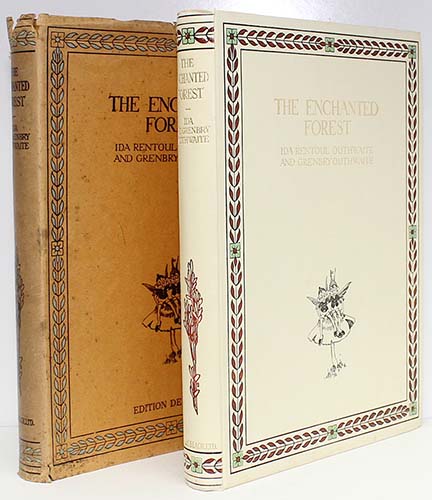
The Enchanted Forest (1921), written and illustrated by Ida Rentoul Outhwaite, is a mesmerizing Art Nouveau fantasy that transports readers into an Australian fairy realm unlike any other. Published by Angus & Robertson in Sydney, this lavish volume showcases Outhwaite’s ethereal watercolors of delicate fairy folk interacting with native Australian wildlife—willowy sylphs riding on the backs of kookaburras, tiny sprites nesting in banksia flowers, and elfin children playing among gum tree blossoms. Her illustrations glow with an antipodean luminosity, where the golden light of the Australian bush transforms into magical glades populated by creatures with translucent wings and garments woven from eucalyptus leaves. Outhwaite’s meticulous attention to native flora and fauna sets this work apart—her fairy rings form from ghost gum saplings, her mushroom stools are exact replicas of Lepiota cristata, and her fairy monarchs wear coronets shaped like waratah flowers. The book’s oversized format (12″x15″) does full justice to her intricate compositions, particularly the breathtaking centerfold where hundreds of fairies gather for a moonlit corroboree, their luminescent forms dancing above a forest floor carpeted with wattles. Unlike European fairy illustrators, Outhwaite rejected gothic undertones in favor of sun-dappled wonder, her pastel-hued palette of lemon yellows, eucalyptus greens, and dawn pinks creating a distinctly Australian enchantment. The production quality—thick handmade paper with deckled edges, gilt-stamped cloth binding featuring Outhwaite’s signature dragonfly motif, and color plates protected by tissue guards—makes this one of the most beautiful Australian books ever produced.
About Ida Rentoul Outhwaite (1888-1960):
Australia’s premier fairy artist developed her singular style while still a teenager in Melbourne, collaborating initially with her sister Anne on stories for New Idea magazine. By this 1921 masterpiece—created during her artistic maturity—Outhwaite had perfected her technique of layering translucent watercolor washes to achieve that characteristic glow, often painting on the verso of sheets to create depth. Unlike contemporaries who recycled European fairy tropes, Outhwaite drew inspiration from the Australian landscape, spending hours sketching in the Dandenong Ranges to capture the unique quality of southern light filtering through gum trees. Her fairies, with their distinctively Australian features and bushland attire, became national icons, appearing on everything from children’s china to wartime postcards. The commercial success of The Enchanted Forest—it went through twelve printings in its first decade—allowed Outhwaite to establish her own studio in Collins Street, where she mentored a generation of Australian illustrators. Though later criticized for sentimentalizing colonization (her fairyland is conspicuously devoid of Indigenous presence), her work remains foundational in Australian visual culture. Original paintings from this series, with their exquisite botanical accuracy and dreamlike atmosphere, now command six-figure sums at auction and are held in the National Gallery of Victoria.
For admirers of this edition, these kindred works may enchant:
• Elves and Fairies (1916) by Outhwaite – her earlier bushland fantasy
• The Little Green Road to Fairyland (1922) by Annie Rentoul – collaboration with her sister
• Snugglepot and Cuddlepie (1918) by May Gibbs – contrasting Australian bush fantasy
